Alfa Romeo 156 1997 - 2006 - used, experience, failures
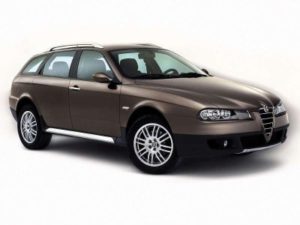
Alfa Romeo 156
The Alfa Romeo 156 (factory code 932) was introduced at the Frankfurt Motor Show in 1997 as the successor to the Model 155.
The beauty of Italian car design experienced one of its stellar moments in 1997 when it introduced the Alfa Romeo 156. Unlike its sleek predecessor, the 155, 156's seductively attracted the attention of the global public and car buyers. The cleverly used back door concealed design trick served to accept this model as one quasi-coupe, which only accelerated sales. The shape of the headlamps with the distinctive Alfin grill dominate the front of the Alfa Romeo 156, and the power boost further accentuates the larger radiator opening. The lights are also at the back, because this time the idea was used with the Alpha 33, on which all the indicators are placed in a single line. The dusty rear of the body with a large bumper gives the impression of massiveness, although it is by no means as big as the German competition.
DESIGN AND INTERIOR - Alfa Romeo 156
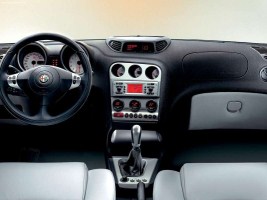
Alfa Romeo 156
The Alfa Romeo 156 uses a third-generation Tipo 2 platform with front-wheel drive, except for the ‚Sportwagon Q4, which has all-wheel drive. To reduce the weight of the vehicle, some materials, such as aluminum, were used, which were used to make several parts of the front and rear trim, as well as magnesium from which the front seat supports were made.
Alfa Romeo 156 does not like holes in Serbian roads. They have a fairly delicate lower lining, so I advise you to drive more cautiously along sections of roads that are in poor condition. Walk lightly over the recumbent police officers and gently approach the curbs of the sidewalk.
This behavior can lead to a longer life for all elements of the suspension and control system, whose repairs and replacements are not cheap.
The progress made with regard to the quality of workmanship is most noticeable in the interior of the Alfa 156. The more gentle touch of plastic dominates most of the instrument panel, and at first glance there is no empty space at the joints between the parts, and therefore no unpleasant whimper. Of course, the first models were of noticeably lower quality, which was just noticed on the aforementioned plastic. The dashboard itself is made by Alfa's recipe from the 60's with two large round clocks with a speedometer and speedometer. Between them is a smaller display that displays data on the computer board with the necessary signal indicators. The rest of the instruments are located on the driver's right side, with a radio, ventilation controls and a small area underneath. The position behind the wheel is almost perfect, and although the seat does not adjust in height it is possible to find a perfectly good position regardless of your height. The seats are sporty tight that may not appeal to all drivers, but they hold the body in place even when driving a little more aggressively.
The space in the front seats is solidly measured and allows the driver to correct his position while driving. The situation is slightly different in the rear seats, because the legroom is too short and passengers with longer legs will often scratch the back of the front seats with their knees. For somewhat "shorter" passengers, there are no such problems, and they will find a suitable position without too many problems. The position of sitting on the back seats is a bit more laid down, so in case of longer trips, you can rest quite nicely on them. Although the Alfa 156 is not too big a car (4430 x 1745 x 1415 mm), the comfort while driving is at a high level, primarily thanks to the good wheelbase of 2.6 m and slightly stiffer suspension. The trunk is one of the things this model is not proud of.
The volume of just 378 liters forces the owner to make small compromises when it comes to the size of the suitcase, with the additional drawback being the high loading edge, which requires a little bit of trouble when inserting things. Alfa Romeo 156 equipment included several levels, with ABS, heated rearview mirrors (not for all markets), height-adjustable steering wheel, fog lights and power-operated front windows as standard for all versions. The Lusso, Veloce, Turismo and Sport packages were supplemented over the years of production, but in earlier models they included only the most basic ones. The Lusso came with velor-covered seats, mahogany center console imitation, wood steering, air conditioning and light alloy wheels. Veloce complemented the above with a fully leather interior, side airbags and a Bose audio system. The sports package included carbon-fiber applications on the console, sports suspension, 16-inch wheels and Recaro or Momo leather seats. Heated seats, a sunroof and a Selespeed automatic transmission could be ordered as accessories.
ENGINE - Alfa Romeo 156
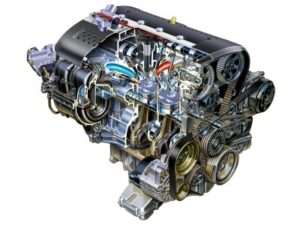
During the production of the Alfa Alfa Romeo 156, there was a wide range of engines available with various power levels.
The 1.9 JTD is the first Common Rail unit to be installed in a passenger car.
The engines, the pearls of each Alfa Romeo model, were offered in the petrol and diesel versions, five petrol and two diesel variants. Engine power has increased over the years, leaving only 1.6 and 1.8 l engines with an initial amount of power. The smallest gasoline engine develops 120 hp, with a top speed of about 180 Km / h and an average of 8 liters. The slightly larger engine is 1747 cc and develops 3 hp, with a top speed of about 144 Km / h and an average of 200 liters. The 8.5 liter engine was offered at 2.0 hp in the first series, while later its power was increased to 155 hp. The top speed for both versions is over 165 Km / h, consuming about 200 liters on average. The more powerful 9 liter engine was delivered at 2.5 hp, despite the enviable power and top speed of 190 Km / h, it is characterized by very high consumption that can go up to 225 liters.
We start with a 1,6 gasoline that can't be bothered to deal with the 156's mass.
Our advice though is to get a slightly larger engine, so 1,8 and 2,0 are the most logical choices.
We have to mention that the 2,5 V6 sounds phenomenal and pulls well. The strongest Alfa Romeo 156 has a V6 of as much as 3.200 cubic meters, and you will recognize it by its GTA designation. In our opinion, though, this is too strong an engine for this chassis.
The average consumption for smaller gasoline engines is somewhere around eight liters of unleaded petrol, while V6 models consume twelve and up, depending on driving style. From diesel, the well-known Italian is installed JTD engines kthese are great and for the needs of the Alfa 156 a bit stronger than in other models.
1,9 JTD the variant has 115 horses, and the stronger, 2,4 even 175. These engines are great towing and not too noisy. The average consumption you can expect is about six liters of Euro diesel.
Engine palette - click
FAULTS - Alfa Romeo 156
Everything has sounded great so far, but in this part of the test Alpha always fails.
Suspension is one of the main problems of the Alfa Romeo 156, followed by electronics that fail as it arrives, and the engines aren't exactly the most reliable in the world. This justifies the high speed of the price drop from the moment when the proud owner takes a new one from the salon. Still, that look of hers. She was forgiven.
On the Alfa 156 manufactured until February 1998, there may be a failure of the immobilizer, the failure preventing the car from starting.
Engine washing is not recommended because of electronics, especially for gasoline engines it is not recommended to wash the engine.
The biggest problem is certainly the valve opening variants used in four-cylinder gasoline engines. Problems with the CVT system make noise first (the engine sounds like diesel at startup), and only then does it begin to fulfill its role. In the end, however, the variator no longer controls the camshafts. The process of changing the variator is expensive. The manufacturer has improved the variators, the variator has been improved.
4 cylinder gasoline engine. Too early wear or burst of the toothed belt, driven 120 km. Mostly with 000 engines. Required check every 1.6 km.
2.0 JTS engine. Possible malfunction of the engine, caused by problems with the lambda sensor or its cables.
2.5 V6 engine. On the Alfa Romeo 156 manufactured until June 1999, several problems with the accelerator pedal potentiometer interfere with the engine.
With gasoline TS engines, only the original spark plugs with platinum electrodes, which have adequate heat storage and durability, are not cheap.
1.8 and 2.0 petrol engines. Alfa Romeo 156 produced until January 2001, rough back work, possible jerk in acceleration. The cars were called to service in September 1998, the throttle engine replaced, with the ECU engine reprogrammed.
3.2 V6 engine (GTA). On GTAs manufactured between February and July 2002, there is a risk of fuel leaks on the connection between the pipe and the spray rail, and the poor connection is not tightened properly.
Diesel engines. In the first Alfa 156, possible problems with the high pressure pump and the nozzles. Symptoms: loss of power and leakage of diesel on the high pressure line. But on all these points, many improvements have been made to the plant since September 1998, including pump and nozzle treatment (to avoid cancellation).
The reliability of the overall injection of these engines (pumps, common rail nozzles) has become constant since January 2000. Small sporadic incidents with the pump on models made until July 2001.
2.4 JTD 136 hp engine. Whistling and risk of premature wear of the toothed belt caused by a lack of tension.
2.4 JTD 136 and 140 hp engine. The Alfa Romeo 156, made in July 2001, leaks diesel on a pressure sensor on a high-pressure line.
2.4 JTD 136 and 140 hp engine. On the Alfa Romeo 156 made until December 2001, the risk of breakage in the turbine.
On an Alfa Romeo 156 with a 1.9 JTD engine built before December 2001, a possible problem with the 80 km floating flywheel.
1.9 JTD engine. On the Alfa Romeo 156 produced until December 2001, mechanical vibration and noise start at a cold start of 40 miles, which grows very rapidly thereafter. Caused by damage to the crankshaft pulley rubber insert.
Na 1.9 JTD diesel engines experience a decline in power and increased smoke, usually due to the jamming of the EGR valve, the problem is usually solved by thoroughly cleaning the EGR valve.
On the Alfa Romeo 156 produced between December 2005 and June 2006, there is a risk of diesel leakage due to the gap between the pipes and the fuel filter bracket. Called for service in April 2008, the problem is with the filter holder.
On 4 cylinder engines made by April 2002, a weak gear belt is possible, causing accelerated belt wear, which can cause the belt to break.
Vehicles manufactured before mid-2002 often suffer from the defect of misrepresenting the amount of fuel in the tank.
Robotic Selespeed gearbox. On models manufactured until March 2001, oil leakage may occur after driving.
Robotic Selespeed gearbox. On models manufactured up to 2003 (and especially those manufactured up to 2001), problems with electronic gearshift change management.
Alfa Romeo 156 produced until 2000, sometimes very early wear of the front tires, caused by inappropriate adjustments to the factory front track. In some cases, even on 2001 models.
Alfa Romeo 156 produced until April 2001, possible fluid leaks from power steering.
On models manufactured until December 2003, steering wheel sounds are heard.
Frequent damage to the air conditioner condenser, pebbles or salt from the road.
On the Alfa Romeo 156 manufactured until 1999, the problem with the doors was to adjust the door hinges or weak door hinges, the hinges needed replacement.
The Alfa Romeo 156 can hear noise from under the instrument panel and door panels.
For Alfa Romeo 156s manufactured before 2003, there may be a problem with the air recirculation damper in the ventilation unit.
Often failures of the AUTO function of air conditioners in vehicles manufactured before redesign.
On the Alfa Romeo 156 produced until September 1998, front door air noise.
On the Alfa Romeo 156 produced until September 2001, the ignition of an airbag was unexpectedly started. Caused by a connector under the driver's seat that shuts off when the driver moves their seat lengthwise.
Fuel gauge. On the Alfa Romeo 156 produced by April 2002, misrepresentation of fuel level in the tank.
The trunk. On the Alfa Romeo 156, produced by January 1998, the boot demanded that it be slammed with force. The lock problem was solved during 1998.
On the Alfa Romeo 156, manufactured between February 2000 and October 2003, the front hood can be opened while driving. Cars called for service in October 2004.
Before buying an Alfa Romeo 156, see:
- interior, look carefully (plastic quality is lost over time)
- electricity, this Italian manufacturer has chronic problems with electricity in the vehicle that are not solved on this vehicle either
- Check the climate and stereo system to make sure they are working properly
- The engines are generally good, but check the shock absorbers, steering and tires that are subject to excessive wear.
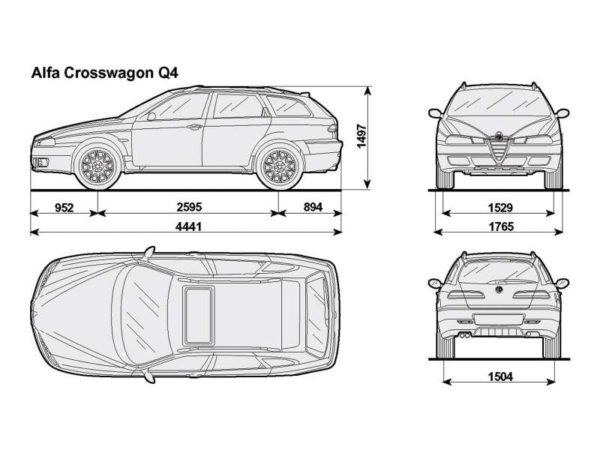
Alfa Romeo 156
CONCLUSION
The Alfa Romeo 156 is a good choice because for a really, very little money you get a beautiful car with plenty of equipment.
Suspension Alfa Romeo 156 is one of the major problems, followed by electronics that fail as it arrives, and the engines aren't exactly the most reliable in the world. This justifies the high speed of the price drop from the moment when the proud owner takes a new one from the salon. Still, that look of hers. She was forgiven.
Alfa Romeo 156 prices - used preview
Recommendation of similar texts:

Hi there, I am Mladen and I am an auto enthusiast. I started this blog years ago to help like minded people share information about latest cars, car servicing ideas, used car info, exotic cars, and auto technology. You will find helpful articles and videos on a wide variety of cars - Audi, Mercedes, Toyota, Porsche, Volvo, BMW and much more. Ping us if you have anything cool to share on latest cars or on how to make older cars more efficient, or just want to say hi!

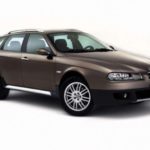
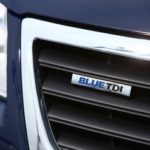
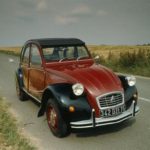
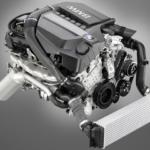


Exceptional post. I had an Alfa 156 fl 140hp and I can confirm that I had 70% of the listed breakdowns. Air bag lamp, fuel leak before the highway, trap disaster, engine mounts are chaos, electric lifts, alternator, plastic thermostat housing, etc.… The car is beautiful and I'm not glad I sold it, because I enjoyed it, but brother, they exaggerated it with little things that affect the overall impression. It is necessary to keep a good account of when it is taken and what it lacks, because although the parts are generally cheap, they often change and spoil the bill. Once again, great text. Greeting.